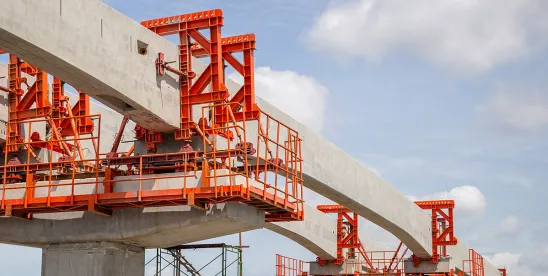Regional Boards’ enforcement of the Construction General Permit (CGP) and Industrial General Permit (IGP) continues to yield high penalty figures; transition to 2022 CGP brings new requirements; and the forthcoming Commercial, Industrial, and Institutional Permit for certain Los Angeles facilities will expand number of regulated sites.
As we prepare to enter the 2024-2025 wet season, municipalities, landowners, developers, and other entities subject to California's CGP or IGP should be aware of recent and continuing regulatory developments. First, permittees continue to face very high civil penalty exposure under both the CGP and IGP. Second, for any construction projects that began before September 1, 2023, under the prior 2009 CGP, permittees should be aware of the mandatory transition to the 2022 CGP next year starting on September 1, 2025. Third, the Los Angeles Regional Water Quality Control Board (LARWQCB) released a draft Commercial, Industrial, and Institutional (CII) Permit that would expand the number of regulated sites in the Dominguez Channel/Inner and Outer Los Angeles and Long Beach Harbor Watershed and the Los Cerritos Channel/Alamitos Bay Watershed. LARWQCB is currently waiting for the U.S. Environmental Protection Agency to designate CII sites for permitting under the Clean Water Act before adopting the CII Permit. Fourth, the ultimate impact of the Supreme Court’s 2023 decision in Sackett v. Environmental Protection Agency remains to be seen, but permittees should know the decision meaningfully restricts the scope of jurisdictional waters under the Clean Water Act.
All entities that are either currently engaged in a regulated construction project or about to break ground under the CGP, or are operating a regulated facility under the IGP, should be aware of these developments and take proactive action to ensure compliance as the wet season begins.
Civil Penalty Enforcement Trends
Below are several recent penalties assessed by the Regional Boards for alleged violations of the CGP and IGP:
- On September 14, 2023, the North Coast Regional Water Quality Control Board issued an Administrative Civil Liability (ACL) Complaint to the operator of a 120-acre aggregate quarry in Sonoma County seeking a record $8.6 million in civil penalties. The North Coast Regional Board alleges that the operator discharged approximately 10.5 million gallons of sediment-laden stormwater in violation of the IGP and that the operator failed to implement required Best Management Practices (BMPs) and failed to submit stormwater samples for analysis. The ACL Complaint against the operator is currently pending.
- On August 30, 2023, the Lahontan Regional Water Quality Control Board and a residential developer entered into a Settlement Agreement and Stipulation for Entry of Order to resolve the developer’s alleged CGP violations in connection with a 20-acre, 63-unit single family home construction project. The developer agreed to pay $1.6 million for various alleged CGP violations. Notably, almost a third of the settlement figure did not pertain to actual conditions at the construction site or a failure to implement BMPs, but a failure to employ a Qualified Storm Practitioner and properly prepare and submit the Storm Water Pollution Prevention Plan (SWPPP) and related documents.
- On March 18, 2024, the Santa Ana Regional Water Quality Control Board issued an ACL Complaint to a metal recycler for alleged violations of the Scrap Metal Recycling Industrial Permit for approximately $2 million. The Scrap Metal Recycling Permit is a sector-specific industrial permit for certain waste metal operations. The Santa Ana Regional Board alleges the recycler failed to implement a corrective action plan following an exceedance.
- On June 17, 2024, the Lahontan Regional Board entered into a Settlement Agreement and Stipulation for Entry of Administrative Civil Liability Order with the Town of Truckee and a large construction contractor for $559,701 in connection with the contractor’s work on a traffic roundabout project. The Lahontan Regional Board alleged that the contractor failed to maintain a physical copy of the SWPPP on site; failed to perform weekly inspections and implement good housekeeping BMPs; and failed to implement sediment control measures.
- On September 13, 2023, the San Diego Regional Water Quality Control Board assessed a civil penalty of $411,475 against a developer of a residential housing project for the alleged discharge of 425,670 gallons sediment-laden stormwater in violation of the CGP. The San Diego Regional Board noted that it could have imposed a maximum liability of $10,886,700 for all violations.
The CGP and IGP matters noted above reflect a continued upward trend in civil penalties. Parties subject to the CGP and IGP should be aware that the multi-million-dollar penalties previously discussed are becoming more common.
Legal Developments
Transition to 2022 Construction General Permit
When the State Water Resources Control Board adopted the 2022 Construction General Permit on September 1, 2023, it allowed permittees that obtained coverage under the previous 2009 Construction General Permit to operate under the requirements of that prior permit for a two-year period. However, on September 1, 2025, all existing Notices of Intent subject to the 2009 Construction General Permit will be administratively terminated and permittees must obtain coverage under the 2022 Construction General Permit. Permittees that are still operating under the 2009 Construction General Permit should take steps now to understand and prepare for the numerous changes under the 2022 Construction General Permit and ensure they have secured coverage prior to September 1, 2025. For a more detailed discussion of the 2022 CGP’s requirements, see our prior alert here.
Commercial, Industrial, and Institutional (CII) Permit
IGP permittees within the Dominguez Channel/Inner and Outer Los Angeles and Long Beach Harbor Watershed and the Los Cerritos Channel/Alamitos Bay Watershed should also be aware of the draft CII Permit. To see if your site falls within one of these two watersheds, please reference the map available here. The LARWQCB is currently waiting for the U.S. Environmental Protection Agency to issue a final designation of the stormwater discharges from CII facilities for the National Pollutant Discharge Elimination System (NPDES) before adopting the CII Permit. The CII Permit would regulate privately owned CII sites such as big box stores, office buildings, and parking lots with five or more acres of impervious cover and unpermitted portions of facilities subject to another NPDES permit, such as the IGP.
Impact of Sackett
Parties subject to the CGP and IGP must also be aware of the potential impact of Sackett v. Environmental Protection Agency, 598 U.S. 651 (2023). In Sackett, the U.S. Supreme Court adopted Justice Scalia’s plurality opinion in the prior case of Rapanos v. U.S., 547 U.S. 715 (2006), which held that the “[Clean Water Act’s] use of ‘waters’ encompasses only those relatively permanent, standing or continuously flowing bodies of water forming geographic[al] features that are described in ordinary parlance as streams, oceans, rivers, and lakes.” Id. at 739. This holding substantially restricts the jurisdictional scope of the Clean Water Act, and with it, the potential for CGP and IGP regulated sites to discharge into Waters of the United States. While the full impact of Sackett is still being determined in courts across the country, NPDES permittees facing a regulatory enforcement action or a citizen suit under the Clean Water Act should always evaluate whether the discharges at issue are to a jurisdictional water post-Sackett and, if not, whether there is jurisdictional standing for the action to proceed.
Preparing for the Wet Season
California typically receives the majority of its precipitation between October 1 and March 31. CGP and IGP permittees should take steps now to prepare for the upcoming wet season. For example, permittees should review and update their Storm Water Pollution Prevention Plans, ensure personnel at the work site have adequate stormwater compliance training, and source any required supplies necessary to implement best management practices – i.e., purchasing stormwater erosion control wattles and plastic covers or binders for disturbed soil areas.




 />i
/>i

